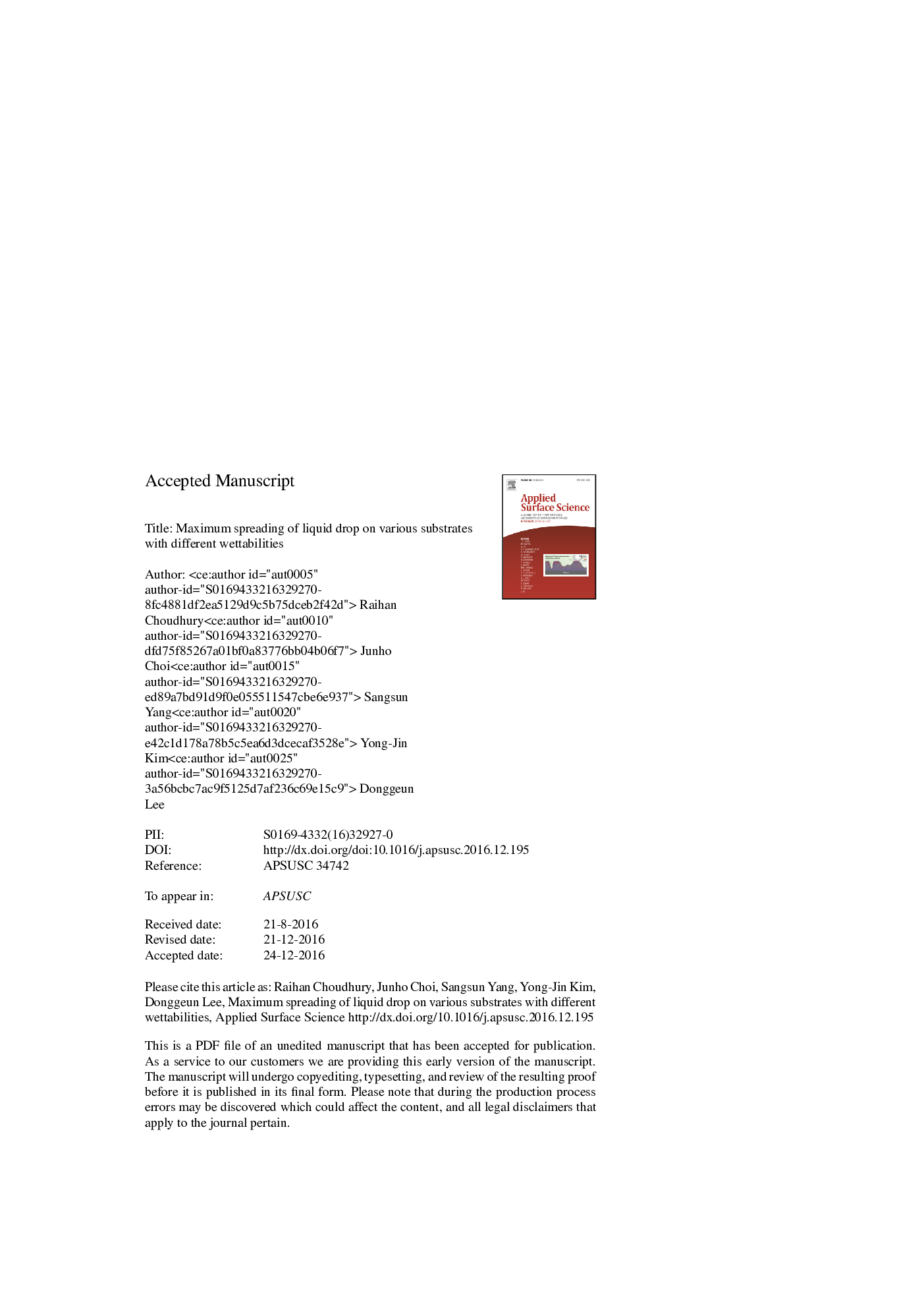| Article ID | Journal | Published Year | Pages | File Type |
|---|---|---|---|---|
| 5350541 | Applied Surface Science | 2017 | 16 Pages |
Abstract
This paper describes a novel model developed for a priori prediction of the maximal spread of a liquid drop on a surface. As a first step, a series of experiments were conducted under precise control of the initial drop diameter, its falling height, roughness, and wettability of dry surfaces. The transient liquid spreading was recorded by a high-speed camera to obtain its maximum spreading under various conditions. Eight preexisting models were tested for accurate prediction of the maximum spread; however, most of the model predictions were not satisfactory except one, in comparison with our experimental data. A comparative scaling analysis of the literature models was conducted to elucidate the condition-dependent prediction characteristics of the models. The conditioned bias in the predictions was mainly attributed to the inappropriate formulations of viscous dissipation or interfacial energy of liquid on the surface. Hence, a novel model based on energy balance during liquid impact was developed to overcome the limitations of the previous models. As a result, the present model was quite successful in predicting the liquid spread in all the conditions.
Related Topics
Physical Sciences and Engineering
Chemistry
Physical and Theoretical Chemistry
Authors
Raihan Choudhury, Junho Choi, Sangsun Yang, Yong-Jin Kim, Donggeun Lee,
